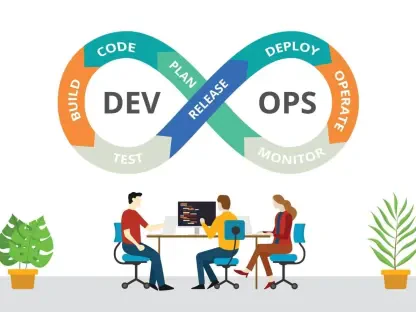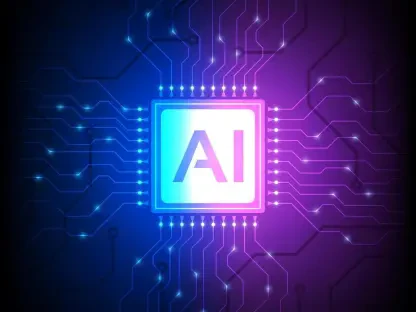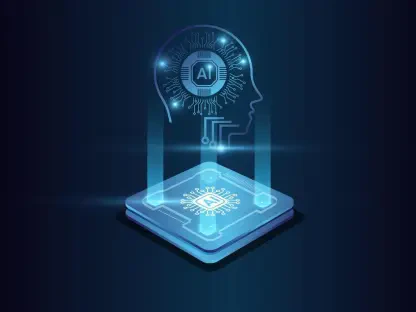In recent years, Python has indisputably become a bedrock in the realm of artificial intelligence (AI) and machine learning (ML), showcasing remarkable capacity to handle and streamline complex tasks that these fields demand. The language’s appeal is rooted in its simplicity and versatility, offering an ease of use that propels innovation and productivity. As AI and ML technologies increasingly influence diverse sectors, Python stands out as a pivotal tool for developers, researchers, and data scientists striving to push the boundaries of what is possible. Its contributions are multifaceted, spanning everything from simplifying algorithm implementation to accommodating the latest advancements in technology, thereby reinforcing its indispensable status in continuous evolution and application.
Python’s Simplifying Syntax and Flexibility
Streamlined Coding Experience
Python is celebrated for its clear and readable syntax, which significantly reduces the complexity typically associated with programming languages. This characteristic simplicity permits developers to concentrate on solving intricate real-world issues rather than getting mired in the structural complications of code. Such a streamlined approach not only accelerates development cycles but also permits rapid prototyping of AI and ML models, essential for testing and iteration. As developers strive to create adaptive solutions, Python’s straightforward syntax allows for the efficient debugging and optimization of these models, ensuring solutions are both effective and agile.
Additionally, Python’s flexibility is evident in its platform-independent nature. It can seamlessly operate across different operating systems, including Windows, macOS, and Linux, without compatibility concerns. This flexibility extends to its deployment capabilities across various applications, from web-based platforms to mobile and IoT devices. By offering such versatile integration, Python empowers developers to implement AI and ML solutions in diverse environments, enhancing their reach and functionality. This adaptability ensures that Python remains relevant even as technological landscapes shift and evolve.
Enabling Rapid Development and Innovation
Python’s accelerating role in AI and ML innovation is underscored by its extensive array of powerful libraries and frameworks, which cater to both general and specialized needs. Tools like NumPy and Pandas facilitate efficient data manipulation and analysis, allowing for streamlined processing of large datasets essential in AI and ML projects. Visualization libraries such as Matplotlib empower scientists and researchers to convey data insights in accessible ways, guiding decision-making processes.
Specific frameworks like TensorFlow and PyTorch are pivotal in supporting deep learning research and applications. These libraries assist in the creation and execution of advanced machine learning models, enabling the automation of tasks previously thought unattainable. As a result, developers can tackle complex problems and achieve breakthroughs in developing AI technologies faster and more efficiently. This suite of resources, coupled with Python’s straightforward learning curve, makes it accessible to a wide range of users, from beginners gaining initial exposure to seasoned professionals exploring cutting-edge innovations.
Practical Applications in Diverse Industries
Revolutionizing Personalization and Decision-Making
Python’s impact on various industries is profound, particularly with its wide-range application in AI and ML. In the entertainment and retail sectors, recommendation engines powered by Python are transforming personalized user experiences. Utilizing machine learning algorithms, these engines analyze user data to suggest content or products tailored to individual preferences, evident in platforms such as Netflix and Amazon. This personalized approach not only enhances user satisfaction but also boosts engagement and sales metrics, highlighting Python’s commercial significance.
In the realm of predictive analytics, businesses employ Python-based models to forecast trends and make informed decisions. By leveraging packages like scikit-learn and XGBoost, companies can conduct comprehensive analysis and derive actionable insights from complex datasets. These predictive models are crucial in strategic planning and risk management across sectors like finance, healthcare, and logistics. Python’s role in empowering organizations to harness data for predictive purposes demonstrates its capability to drive efficiency and innovation in competitive landscapes.
Advancements in Robotics and Vision
Python’s utilization in the field of robotics signals its adaptability and support for sophisticated tasks such as navigation, object detection, and autonomous decision-making. Through machine learning algorithms integrated within Python libraries, robots are endowed with a form of artificial intelligence that allows them to adapt to dynamic environments and execute tasks with precision. This is particularly influential in sectors such as manufacturing and healthcare, where automation can enhance productivity and safety.
Moreover, Python plays a pivotal role in advancing computer vision technologies, with libraries like OpenCV and PyTorch at the forefront. These tools facilitate complex processes such as image recognition and object detection, which are critical in various applications, including autonomous vehicles, security systems, and medical diagnostics. By streamlining these intricate functions, Python enables the creation of robust solutions that improve accuracy and efficiency in visual data interpretation. The language’s contribution to advancing robotics and computer vision highlights its integral role in modern technological innovation.
Challenges and Emerging Trends
Addressing Data Quality and Model Interpretation
Despite its strengths, the development of AI and ML models using Python faces several challenges, particularly concerning data quality and accessibility. High-quality data is the backbone of effective machine learning models; however, obtaining such data can be a daunting task. Poor-quality data can lead to inaccurate model predictions and flawed outcomes, necessitating concerted efforts in data collection and preprocessing. Furthermore, the challenges of model interpretability persist, especially in complex deep learning models often regarded as opaque ‘black boxes.’ This lack of transparency is problematic in industries such as healthcare and finance, where understanding the rationale behind predictions is essential.
The quest for ethical and fair AI development is an emerging trend addressing these concerns. Python stands as a pioneer in this regard, with libraries like Fairlearn aiming to promote transparency and inclusivity in model creation. These tools are aimed at building AI applications that provide unbiased and fair outcomes, an increasingly important consideration as AI systems impact everyday life. As AI research intensifies, Python’s role in facilitating ethical practices and transparency reinforces its status as a trusted resource.
Adapting to Technological Advancements
Python also displays adaptability in the face of new technological trends such as automation of machine learning pipelines and the convergence with emerging computing paradigms. Libraries like MLflow and Kubeflow facilitate the automation of complex machine learning workflows, reducing manual overhead and allowing developers to focus on strategic innovation. This level of automation is critical in scaling AI solutions and enhancing operational efficiency.
Concurrently, Python’s integration with advanced technologies like cloud computing and edge computing ensures sustained utility for AI development. This synergy is vital for managing the scaling of AI applications across platforms and addressing logistical constraints imposed by resource-intensive models. As Python evolves in synchrony with such technological advancements, its ongoing relevance and adaptability are assured. This dynamic adaptability, coupled with a firm commitment to ethical standards, positions Python as a leader in driving AI and ML innovation into the future.
Shaping the Future of AI and ML
Python’s pervasive presence in AI and ML is set to continue, fortified by its robust library ecosystem, user-friendly syntax, and broad applicability. As AI systems gradually integrate into every facet of life, Python’s role as a facilitator of accessible, fair, and transparent AI models becomes ever more prominent. It remains instrumental in fostering a landscape where innovation is not only attainable but ethical and expansive, enabling new players to contribute significantly to these fields.
Looking ahead, the focus shifts towards enhancing AI’s reach and democratizing its tools and techniques. Python acts as a medium bridging technical expertise and accessible technology, encouraging diversity in contributors and fostering innovation that benefits a broader spectrum of industries. In navigating technological advances, Python remains an integral component in crafting the frameworks that define the future of AI and ML, cementing its legacy as a cornerstone of intelligent technological progress.









